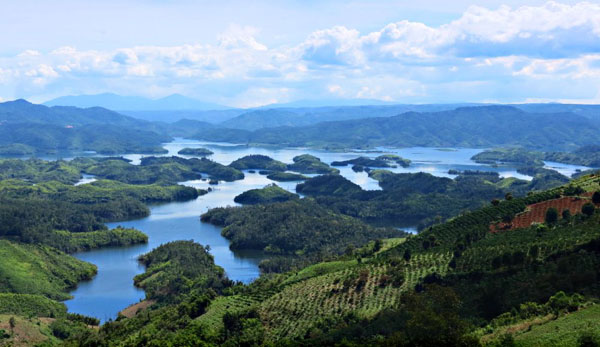
Going along the National Highway no. 28 for about 45 km from Gia Nghia town towards the southeast of Lam Dong province, we will arrive at Ta Dung Natural Resreve belonging to Dak P'lao and Dak Som commune of Dak Glong; Ta Dung natural reserve has an area of 22.103 ha, in which the area of immense green forest accounts for 86,7%. This is an ideal place for many kinds of eco-tourism, resort, mountain climbing for tourists.
Ta Dung is the highest mountain range in Dak Nong, the highest peak is 1.982 meters, it lies between Dak Nong and Di Linh plateau belonging to the biological geography region in South Central, this is the intersection of geography and biology between the south Central Highlands and the Southeast.
Ta Dung is the upstream of Dong Nai river system, it has hydroelectric projects of Dong Nai 3 and 4 under operation creating lakes with an area of nearly 3.620ha of the water surface and over 36 large and small islands, in which there are some islands with large area creating the favorable condition for developing eco-tourism.
Ta Dung natural reserves has over 1,000 species of flora and fauna, this is the region where there is biodiversity. There are many species named in the Red Book of Viet Nam and the world. Especially, Ta Dung is one of the four endemic bird areas, containing one eighth of species of bird in Vietnam and among 222 endemic bird areas around the world. Inside the forest, there is a stream named Dak N'teng flowing through, creating two attractive and mysterious waterfalls. Standing on the high position looking down the mountain slope, tourists can see the villages of the local residents of Dak P'lao, Dak R'mang and Dak Som commune. This place still stores many traditional values deeply imbued with cultural identities.
With the natural potential and unique culture, Ta Dung, in the future, will be invested and planned into one of the two national ecological, sightseeing and convalescent tourist site with diverse and distinctive tourism products.
Editorial Board